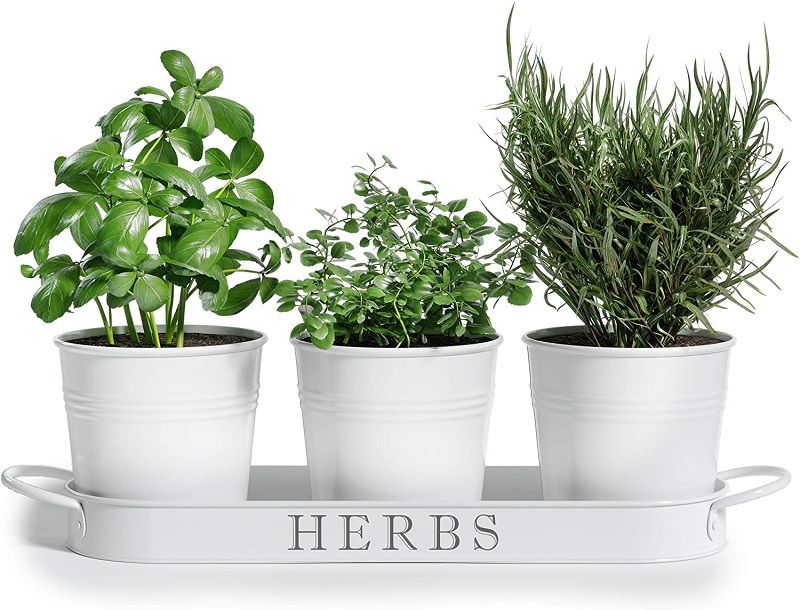Medicinal herbs have been used for centuries as natural remedies for various ailments, and their demand continues to grow in the modern world. With the increasing interest in natural and holistic approaches to healthcare, the commercial cultivation of medicinal herbs presents a lucrative opportunity for farmers and entrepreneurs. Not only does it provide a sustainable source of income, but it also contributes to the well-being of individuals seeking alternative therapies. Here are ten of the best medicinal herbs you can grow on a commercial level.
Echinacea
Known for its immune-boosting properties, Echinacea is one of the most popular medicinal herbs. It is used to prevent and treat common colds, respiratory infections, and various other conditions. With a growing interest in natural immunity enhancers, Echinacea holds significant commercial potential.
Ginseng
Ginseng is a revered herb in traditional Chinese medicine. It is valued for its adaptogenic properties, which help the body cope with stress and improve overall well-being. The demand for ginseng, particularly in the form of herbal supplements, is steadily increasing worldwide.
Turmeric
Renowned for its anti-inflammatory and antioxidant properties, turmeric has gained immense popularity in recent years. Its active compound, curcumin, is believed to provide various health benefits, including pain relief and improved digestion. The market for turmeric-based products, such as supplements and teas, is thriving.
St. John’s Wort
St. John’s Wort is a medicinal herb commonly used for its antidepressant and mood-stabilizing properties. It thrives in sunny locations and well-drained soil. As the demand for natural alternatives to conventional antidepressants continues to rise, cultivating St. John’s Wort commercially can be a lucrative opportunity.
Valerian
Valerian is a popular medicinal herb known for its sedative and calming properties. If you’re interested in growing valerian commercially, you can easily find valuable resources and guidance online. There are numerous websites, gardening forums, and online communities dedicated to herbal cultivation that provide detailed information on how to grow valerian. These resources typically cover various aspects such as soil requirements, preferred growing conditions, and propagation methods.
Holy Basil
Holy basil, also known as Tulsi, is considered a sacred herb in many cultures. It is valued for its adaptogenic properties and is often used to promote relaxation and reduce stress. Holy basil grows well in tropical and subtropical climates, making it suitable for commercial cultivation in certain regions.
Goldenseal
Goldenseal is a herbaceous perennial plant native to North America. It is highly valued for its medicinal properties and has been used by indigenous peoples for centuries. Goldenseal contains berberine, a compound known for its antimicrobial and anti-inflammatory effects. This herb is often used to boost the immune system, promote digestive health, and alleviate respiratory conditions. Due to its popularity and scarcity in the wild, commercial cultivation of goldenseal has become essential to meet the growing demand. Learning how to grow goldenseal can be done through various commercial resources.
Chamomile
Chamomile is a widely recognized and highly versatile medicinal herb. It has a long history of use in traditional medicine for its soothing and calming properties. Chamomile is commonly consumed as a tea and is renowned for its ability to promote relaxation, ease digestion, and support sleep. The herb is also known for its anti-inflammatory and antioxidant properties, making it beneficial for various health conditions. When it comes to cultivation, chamomile is a relatively easy herb to grow, making it accessible to both home gardeners and commercial growers. It prefers well-drained soil and thrives in sunny locations, although it can tolerate partial shade.
Cannabis
Cannabis, also known as marijuana or hemp, is a versatile plant that has gained significant attention for both its recreational and medicinal uses. The cannabis plant contains numerous compounds called cannabinoids, with THC being the primary psychoactive compound responsible for the “high” associated with marijuana. However, another important cannabinoid, CBD, is non-intoxicating and has gained popularity for its potential therapeutic benefits. The cultivation of cannabis requires careful consideration of legal regulations, as it varies from country to country and even within different regions. In jurisdictions where cannabis cultivation is legal, individuals or licensed businesses can grow cannabis for personal use or commercial purposes. Make sure to research local cannabis growing info as well as the legal limitations of growing the plant before you decide to cultivate it commercially.
Catnip
Catnip is a unique and fascinating herb known for its intriguing effects on cats. Native to Europe and Asia, catnip belongs to the mint family and has a long history of use as a medicinal and aromatic plant. While it is beloved by feline companions, catnip also offers several benefits for humans. The herb contains nepetalactone, a compound that acts as a mild sedative and can promote relaxation and stress relief. Catnip tea is often consumed to soothe digestive issues, alleviate menstrual cramps, and support sleep. When it comes to cultivation, catnip is relatively easy to grow and thrives in well-drained soil and full sunlight.
Conclusion
Growing medicinal herbs commercially can be a profitable venture, especially considering the increasing demand for natural remedies and alternative medicine. With the abundance of online resources available, learning how to grow these herbs has become easily accessible. Whether you’re interested in the immune-boosting properties of Echinacea or the calming effects of Valerian, exploring the world of medicinal herb cultivation can open up exciting business opportunities.


